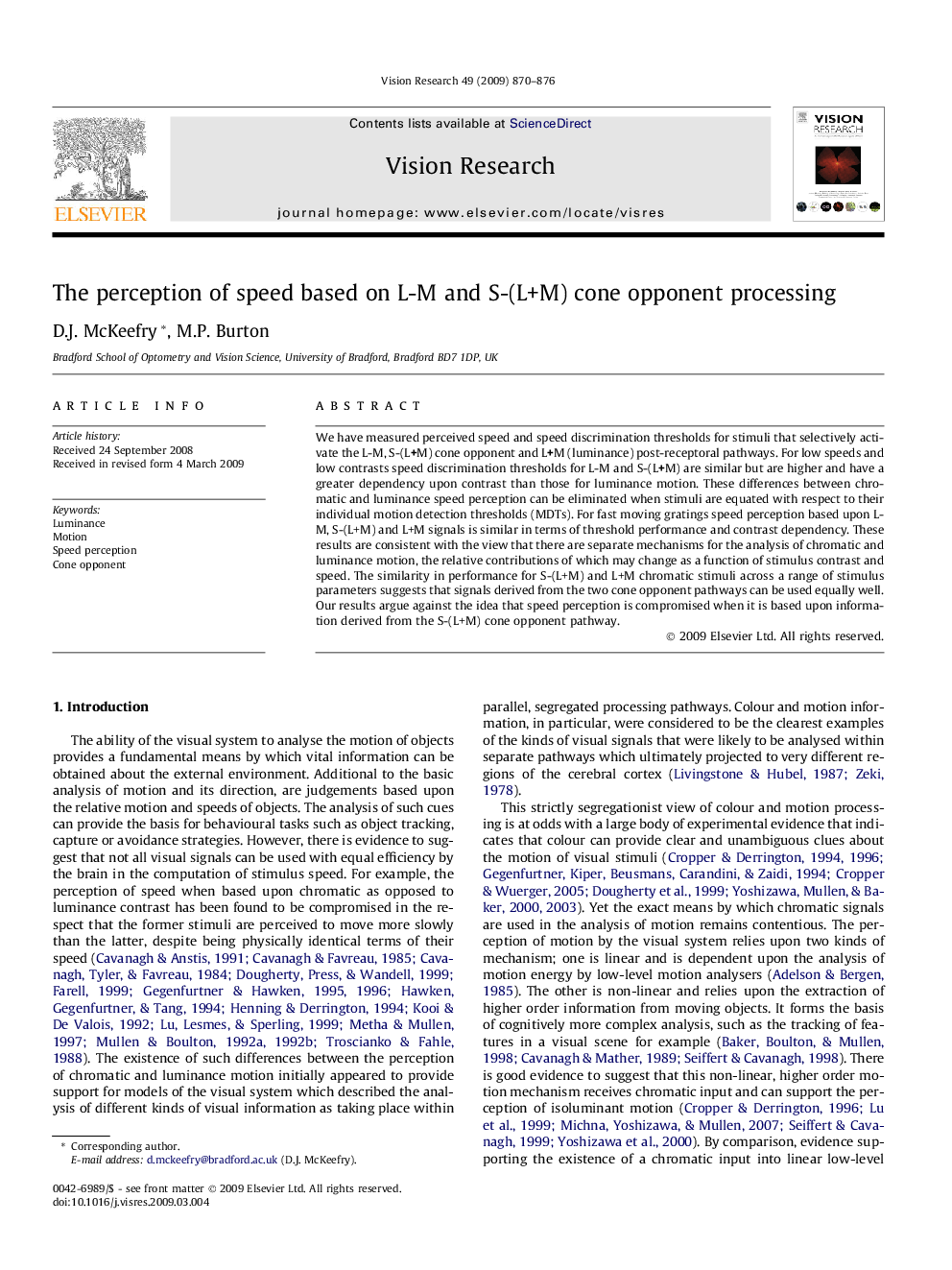| Article ID | Journal | Published Year | Pages | File Type |
|---|---|---|---|---|
| 4034799 | Vision Research | 2009 | 7 Pages |
We have measured perceived speed and speed discrimination thresholds for stimuli that selectively activate the L-M, S-(L+M) cone opponent and L+M (luminance) post-receptoral pathways. For low speeds and low contrasts speed discrimination thresholds for L-M and S-(L+M) are similar but are higher and have a greater dependency upon contrast than those for luminance motion. These differences between chromatic and luminance speed perception can be eliminated when stimuli are equated with respect to their individual motion detection thresholds (MDTs). For fast moving gratings speed perception based upon L-M, S-(L+M) and L+M signals is similar in terms of threshold performance and contrast dependency. These results are consistent with the view that there are separate mechanisms for the analysis of chromatic and luminance motion, the relative contributions of which may change as a function of stimulus contrast and speed. The similarity in performance for S-(L+M) and L+M chromatic stimuli across a range of stimulus parameters suggests that signals derived from the two cone opponent pathways can be used equally well. Our results argue against the idea that speed perception is compromised when it is based upon information derived from the S-(L+M) cone opponent pathway.
